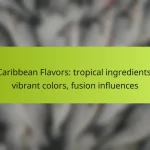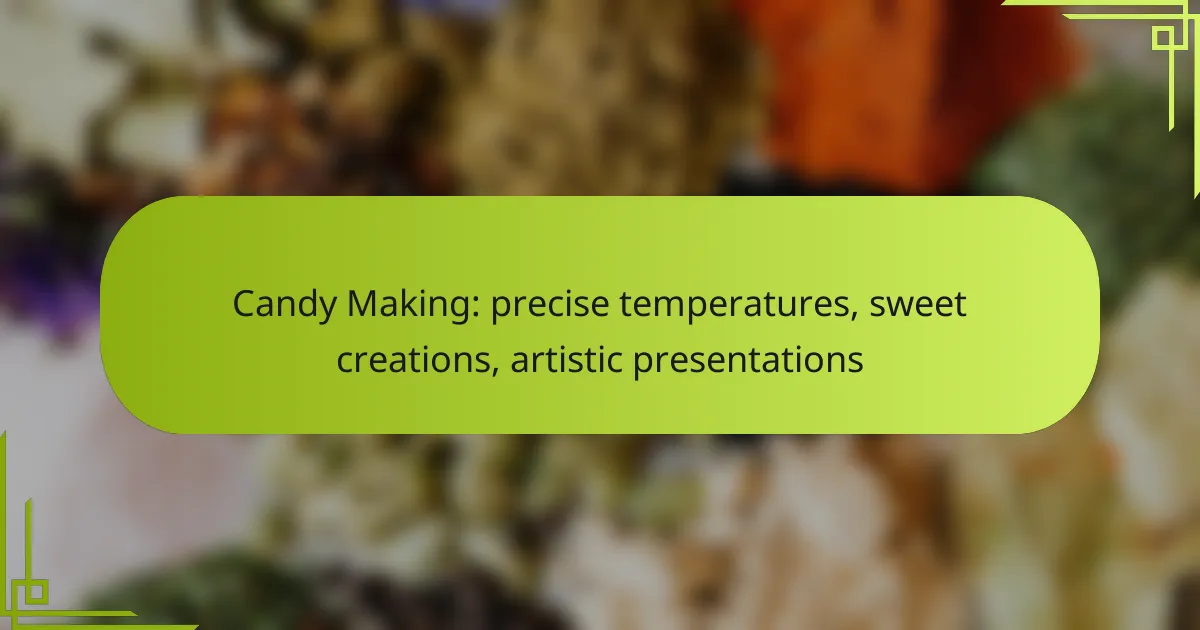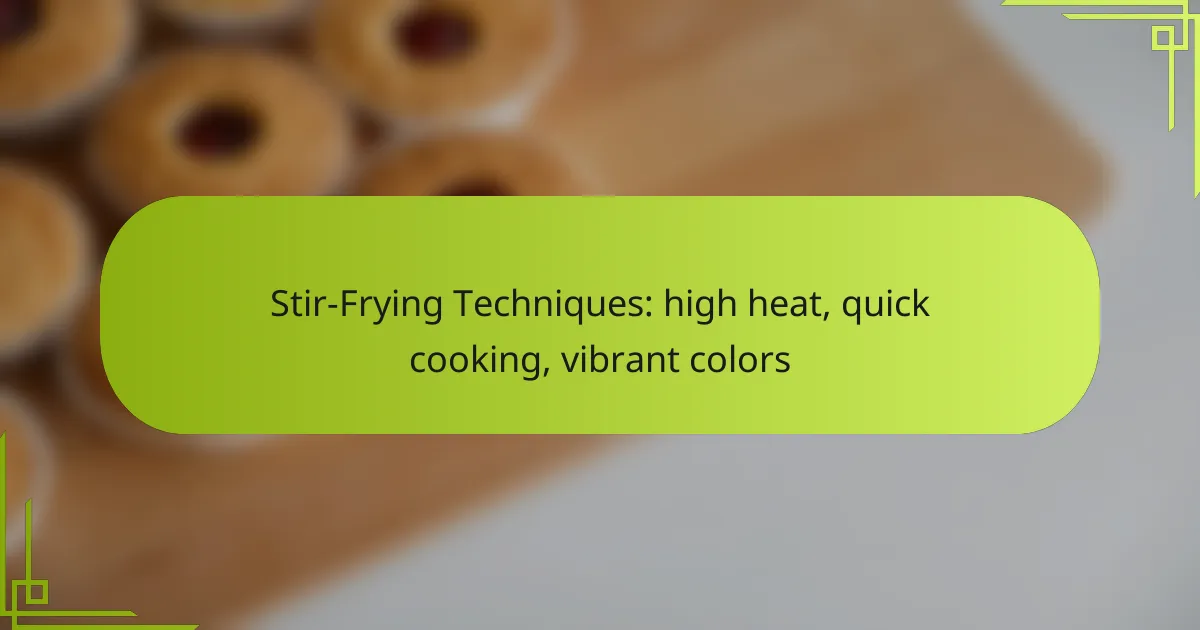Candy making is an art that requires precise temperature control to achieve the perfect texture and consistency in your sweet creations. By mastering the science behind sugar and temperature, along with utilizing essential tools like thermometers and molds, you can elevate your candy-making skills to create visually stunning and delicious treats.

What are the best temperatures for candy making?
The best temperatures for candy making vary depending on the type of candy being created. Understanding these temperature stages is crucial for achieving the desired texture and consistency in your sweet creations.
Soft ball stage (112-115°C)
The soft ball stage is reached when the sugar syrup temperature hits between 112-115°C. At this point, a small amount of syrup dropped into cold water will form a soft, pliable ball that can be easily flattened between your fingers.
This stage is essential for candies like fudge and marshmallows. To ensure accuracy, use a reliable candy thermometer to monitor the temperature closely, as going slightly over can lead to a firmer texture.
Hard crack stage (149-154°C)
The hard crack stage occurs when the syrup temperature reaches 149-154°C. At this stage, the syrup will harden and break cleanly when dropped into cold water, forming hard, brittle pieces.
This temperature is ideal for making lollipops and hard candies. Be cautious during this stage, as the syrup can easily burn if not monitored closely, leading to an undesirable flavor and texture.
Thread stage (106-110°C)
The thread stage is identified when the syrup temperature is between 106-110°C. At this point, a drop of syrup will form a thin thread when drizzled from a spoon, indicating that it is ready for further processing.
Temperature tools for accuracy
Using the right temperature tools is vital for accurate candy making. A high-quality candy thermometer or digital instant-read thermometer can help ensure you reach the precise temperatures needed for different candy stages.
Consider investing in a thermometer that can clip onto the side of your pot for hands-free monitoring. Always calibrate your thermometer regularly to maintain accuracy, especially if you notice inconsistencies in your candy results.

How to create different types of candy?
Creating different types of candy involves mastering specific techniques and understanding the science behind sugar and temperature. Key factors include precise temperature control, ingredient selection, and presentation methods to achieve desired textures and flavors.
Chocolate tempering techniques
Chocolate tempering is essential for achieving a glossy finish and a satisfying snap in your confections. The process involves heating chocolate to a specific temperature, cooling it, and then reheating it slightly to stabilize the cocoa butter crystals.
For dark chocolate, heat it to around 120°F (49°C), cool it to about 82°F (28°C), and then gently reheat to 88-90°F (31-32°C). Milk and white chocolates require slightly lower temperatures. Use a thermometer for accuracy and avoid moisture, which can cause seizing.
Making hard candy recipes
Hard candy is made by boiling sugar and water until it reaches the hard crack stage, typically between 300°F and 310°F (149°C to 154°C). This high temperature allows the sugar to achieve the right consistency for a clear, brittle candy.
Common flavors include peppermint, cinnamon, and fruit extracts. Once the mixture reaches the desired temperature, pour it onto a greased surface and allow it to cool before breaking it into pieces. Always use caution, as the hot sugar can cause severe burns.
Preparing fudge variations
Fudge is a soft, creamy candy made by combining sugar, butter, and milk, then cooking it to a soft ball stage, around 234°F to 240°F (112°C to 116°C). The key to smooth fudge is proper mixing and cooling techniques.
Variations can include adding chocolate, nuts, or flavorings like vanilla or caramel. Once cooked, pour the mixture into a greased pan and let it cool before cutting into squares. Avoid stirring too much once it starts to cool, as this can lead to a grainy texture.

What are essential tools for candy making?
Essential tools for candy making include thermometers, molds, and mixing utensils. These tools help ensure precision in temperature control, allow for creative shapes, and facilitate the mixing process, all of which are crucial for successful candy creation.
Thermometers for precision
Thermometers are vital for achieving the exact temperatures needed in candy making. Different types of candy require specific temperature ranges, such as soft ball stage (around 234-240°F or 112-116°C) for caramels or hard crack stage (around 300-310°F or 149-154°C) for lollipops.
Using a candy thermometer or an instant-read thermometer can help you monitor temperatures accurately. Avoid using regular kitchen thermometers, as they may not provide the precision needed for candy making.
Candy molds for artistic shapes
Candy molds allow you to create visually appealing shapes and designs. They come in various materials, including silicone, plastic, and metal, each offering different benefits in terms of ease of use and durability.
When selecting molds, consider the type of candy you are making. For example, silicone molds are flexible and easy to release, making them ideal for chocolates, while metal molds are better for hard candies that require a more rigid structure.
Mixing tools and utensils
Mixing tools such as spatulas, whisks, and spoons are essential for combining ingredients evenly. A heat-resistant silicone spatula is particularly useful for stirring hot mixtures without melting.
Additionally, consider using a heavy-bottomed saucepan to prevent scorching, as it distributes heat evenly. Avoid using wooden utensils, as they can absorb moisture and lead to inconsistent results in your candy.

How to present candy artfully?
Artful presentation of candy enhances its appeal and can elevate any occasion. Consider factors like color, texture, and packaging to create visually stunning displays that entice and impress.
Packaging ideas for gifts
When packaging candy for gifts, choose materials that complement the candy’s colors and textures. Clear cellophane bags, decorative boxes, or mason jars can add a personal touch. Consider using ribbons or labels to enhance the presentation.
For a more upscale look, opt for custom boxes or tins that reflect the theme of the occasion. Ensure that the packaging is sturdy enough to protect the candy during transport, especially if it contains delicate items like chocolate truffles.
Display techniques for events
To display candy at events, use tiered stands or glass jars to create visual interest. Arrange candies by color or type for a cohesive look that draws the eye. Incorporate natural elements like flowers or greenery to soften the display and add elegance.
Consider using themed decorations that match the event’s purpose, such as festive colors for holidays or elegant touches for weddings. Ensure that the display is easily accessible for guests to encourage sampling without creating a mess.
Color and texture combinations
Combining different colors and textures can make candy presentations more appealing. Use contrasting colors to create a vibrant display, such as pairing dark chocolates with bright fruit-flavored candies. Textural variety, like crunchy nuts alongside smooth caramels, adds depth to the visual experience.
Experiment with color gradients or monochromatic themes to evoke specific moods. For instance, pastel colors can create a soft, romantic feel, while bold colors can energize a party atmosphere. Always consider the overall theme and audience when selecting combinations.

What are the prerequisites for successful candy making?
Successful candy making hinges on a few key prerequisites, including high-quality ingredients, a solid understanding of sugar chemistry, and precise temperature control. Mastering these elements ensures that your sweet creations are not only delicious but also visually appealing.
Ingredient quality and sourcing
The quality of ingredients directly impacts the flavor and texture of your candy. Always opt for fresh, high-grade sugars, chocolates, and flavorings from reputable suppliers. For example, using pure vanilla extract instead of imitation can significantly enhance the taste of your confections.
When sourcing ingredients, consider local suppliers for seasonal fruits or nuts, which can provide unique flavors and textures. Additionally, check for any specific regulations regarding food safety and ingredient sourcing in your area to ensure compliance.
Understanding sugar chemistry
A fundamental grasp of sugar chemistry is crucial for candy making. Different types of sugar behave uniquely when heated; for instance, granulated sugar melts at around 160°C (320°F) while caramelization begins at approximately 170°C (340°F). Knowing these temperatures helps prevent burning and ensures the right consistency.
Additionally, the presence of acids or fats can alter the properties of sugar, affecting crystallization and texture. For example, adding corn syrup can help prevent sugar from crystallizing, resulting in a smoother candy. Familiarize yourself with these chemical interactions to enhance your candy-making skills.

How to troubleshoot common candy making issues?
Troubleshooting common candy making issues involves identifying specific problems and applying targeted solutions. Understanding the causes of issues like graininess or crystallization can help you achieve smoother, more appealing results.
Fixing grainy candy
Grainy candy typically results from sugar crystals forming during the cooking process. To fix grainy candy, you can reheat it gently while stirring continuously until the sugar dissolves again. If the graininess persists, consider adding a small amount of water or corn syrup to help dissolve the crystals.
To prevent graininess in the future, ensure that your cooking temperature is consistent and avoid stirring the mixture too vigorously while it cooks. Using a candy thermometer to monitor temperatures can help maintain the right conditions for a smooth texture.
Preventing crystallization
Crystallization occurs when sugar molecules form solid crystals instead of remaining in a syrupy state. To prevent this, use a clean pot and utensils, as impurities can trigger crystallization. Additionally, adding an acid like lemon juice or cream of tartar can help inhibit crystal formation.
When cooking sugar, aim for a temperature range of 240°F to 250°F (115°C to 120°C) for soft ball stage candies. Avoid stirring the mixture after it reaches this temperature to minimize the risk of crystallization. If you notice crystals forming, you can add a bit of water and gently reheat the mixture to dissolve them before proceeding.

What are the latest trends in candy making?
The latest trends in candy making focus on innovative flavors, sustainable practices, and artistic presentations. Candy makers are increasingly experimenting with unique ingredients and techniques to create visually stunning and delicious confections.
Unique Flavor Combinations
Modern candy makers are pushing the boundaries of traditional flavors by incorporating unexpected ingredients. For example, pairing savory elements like sea salt or herbs with sweet profiles can enhance the overall taste experience. Popular combinations include lavender-infused chocolates or chili-spiced caramels.
To stay on trend, consider using local and seasonal ingredients, which not only support sustainability but also add a fresh twist to your creations. Experimenting with flavors like matcha or exotic fruits can also set your candy apart.
Sustainable Practices
With growing awareness of environmental issues, many candy makers are adopting sustainable practices. This includes sourcing organic ingredients, using eco-friendly packaging, and minimizing waste during production. Consumers are increasingly favoring brands that prioritize sustainability.
To implement sustainable practices, start by evaluating your ingredient sources and packaging options. Look for suppliers who emphasize ethical farming and consider using biodegradable materials for wrapping your candies.
Artistic Presentations
Visual appeal is becoming just as important as taste in candy making. Creative presentations, such as intricate designs or vibrant colors, can make a significant impact on consumer attraction. Techniques like marbling, layering, or using molds can elevate the aesthetic of your candies.
When designing your candy, think about how colors and shapes can complement the flavors. Using garnishes like edible flowers or gold leaf can also enhance the overall presentation, making your creations not just tasty but also visually stunning.










